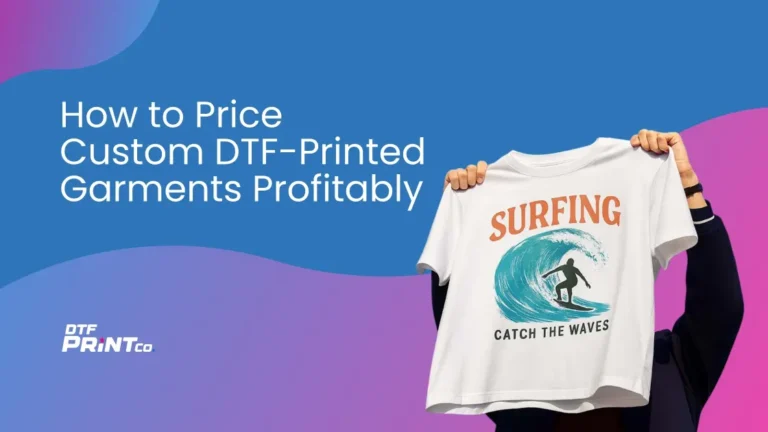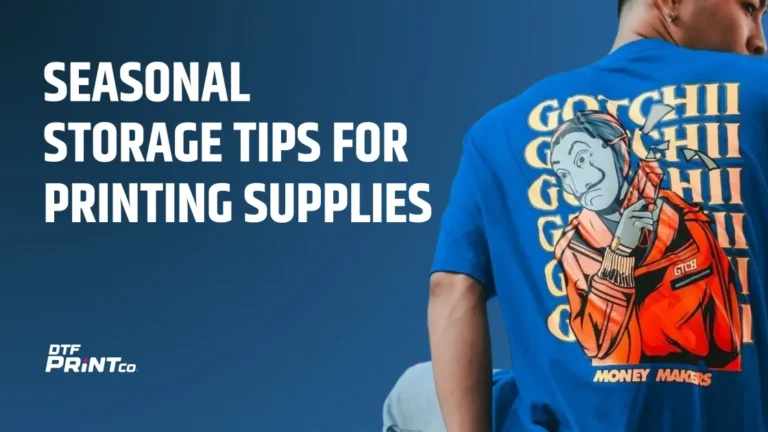Direct-to-Film (DTF) printing is revolutionizing the custom apparel industry. Whether you’re a DIY enthusiast, small business owner, or seasoned designer, mastering creative DTF printing techniques can take your designs to the next level. This guide dives deep into advanced methods, tips, and insights to help you elevate your prints, maintain high quality, and expand your creative horizons. With a combination of technical know-how and artistic exploration, you can create designs that not only sell but also leave a lasting impression.
What is DTF Printing?
DTF (Direct-to-Film) printing is a heat transfer method that prints designs onto a special film, which is then transferred to fabric using a heat press. Unlike traditional methods like screen printing or DTG (Direct-to-Garment), DTF offers:
- Versatility across fabric types (cotton, polyester, blends, nylon, etc.)
- Vibrant color reproduction for both light and dark textiles
- Cost-efficiency for short runs and large-scale production
- Durable and stretch-resistant prints that withstand multiple washes
- Lower setup time compared to screen printing
Thanks to its flexibility and affordability, DTF has become a go-to solution for apparel decorators, hobbyists, and entrepreneurs alike.
Essential Supplies for Creative DTF Printing
Before exploring advanced techniques, ensure your DTF setup includes the following components:
- DTF printer with CMYK and white ink capabilities
- PET film sheets or rolls (hot or cold peel, depending on your needs)
- DTF inks compatible with your printer model
- Hot melt adhesive powder for bonding design to fabric
- Heat press machine with temperature, pressure, and timer controls
- Curing unit or oven (optional, for faster powder melting)
- Design software such as Adobe Illustrator, Photoshop, Procreate, or CorelDRAW
Proper equipment setup plays a huge role in achieving consistent, professional-quality results.
Technique 1: Layered Color Effects
Using strategic color layering can dramatically enhance depth and vibrancy in your designs, making them more dynamic and visually appealing.
How to Apply:
- Create your artwork using multiple layers for shadows, mid-tones, and highlights
- Use high-opacity ink settings for base layers, and lower opacity for accent layers
- Adjust your RIP software to sequence the print order effectively
- Apply adhesive powder evenly and cure fully before transferring
Pro Tip:
Add semi-transparent gradients and digital paint strokes to simulate airbrushed or watercolored effects. This technique is especially effective on black or navy garments where contrast matters most.
Technique 2: Textured Prints Using Additive Layers
DTF prints are typically smooth, but you can simulate textures using detailed artwork and careful design techniques.
Ideas to Try:
- Faux embroidery using tight stitching patterns and embroidery-style fonts
- Distressed and grunge effects to give a worn-in, vintage aesthetic
- 3D visual illusions with drop shadows, bevels, and raised effects
- Halftone patterns to create a comic book or retro feel
Tools That Help:
- Layer blending tools in Photoshop
- Vector art filters for texture simulation
- High-resolution texture overlays for realism
These tricks allow you to simulate a tactile experience without adding actual bulk to the print.
Technique 3: Hybrid DTF + Embellishments
Blend the best of both worlds by combining DTF prints with real-world embellishments for a tactile, high-impact result.
Embellishment Ideas:
- Rhinestones or sequins applied manually or with transfer tape after DTF pressing
- Embroidery overlays on top of or around DTF prints for a mixed-media look
- Heat-transfer foil or metallic vinyl for shimmer effects using a second press cycle
- Fabric paint or puff additives for raised, dimensional designs
Use Cases:
- Fashion-forward streetwear
- Limited-edition merchandise
- Performance gear with branding and flair
Combining media increases the perceived value of your products and opens up premium pricing opportunities.
Technique 4: Glow-in-the-Dark & Reflective Inks
Specialty inks can create standout, functional designs that literally shine in the dark or under lights.
Types of Specialty Inks:
- Glow-in-the-dark (phosphorescent) inks that store and emit light in darkness
- Reflective inks that bounce back light for high-visibility gear
- UV-reactive inks that change color in sunlight
Considerations:
- Ensure compatibility with your printer and PET film
- Adjust drying times and heat press settings to prevent ink breakdown
- Use white underbase to maximize brightness
These effects are especially popular in safety apparel, children’s clothing, music merch, and event wear.
Technique 5: Photorealistic Prints
DTF printing excels at capturing intricate, photo-quality details—perfect for premium graphic tees and custom merchandise.
Best Practices:
- Choose high-res images (300 DPI or more) to avoid pixelation
- Calibrate monitor and printer profiles to maintain color accuracy
- Use a RIP software that supports ICC color profiles and white underbase management
- Test prints and adjust settings to preserve shadow details and mid-tone transitions
This method is perfect for:
- Custom portrait shirts
- Pet memorial designs
- Landscape photography on apparel
- Pop culture mashups
Technique 6: Customized Fabric Blends
Expand your offerings by applying DTF to unconventional fabrics. This not only broadens your product line but helps your brand stand out in the market.
Compatible Fabrics:
- Nylon and polyester blends (use low-temp adhesive powder)
- Spandex and Lycra (test for stretch compatibility)
- Bamboo and organic cotton (market to eco-conscious customers)
- Canvas and denim (great for bags and jackets)
Tips:
- Pre-press garments to remove moisture and wrinkles
- Run wash tests to check ink adhesion and flexibility
- Inform customers of special care instructions for unique fabric types
Technique 7: Multi-Panel or Seamless Wrap Designs
For bold, attention-grabbing apparel, try printing large designs that wrap around multiple garment sections.
How to Execute:
- Use design tools to divide your artwork across panels (e.g., front, back, sleeves)
- Label and print each section precisely
- Carefully align pieces during heat pressing to ensure a cohesive image
Suitable Applications:
- All-over print hoodies
- Tracksuits and athletic gear
- Corporate uniforms or branded team wear
This technique requires more planning but results in high-impact visuals that differentiate your brand.
Bonus Technique: Personalized and On-Demand DTF Transfers
Offer on-demand printing for hyper-personalized apparel. Let customers submit names, photos, or messages and print them as individual transfers.
Why It Works:
- High customer satisfaction
- Great for birthdays, events, and gifts
- Streamlined order fulfillment for e-commerce
How to Implement:
- Build a custom order form or integration with your website
- Use templates for layout and print consistency
- Batch smaller orders into gang sheets to maximize efficiency
FAQ-
Is DTF better than DTG?
DTF is generally more versatile and durable, especially on synthetic fabrics. DTG may offer a softer hand feel but is limited to 100% cotton and is more maintenance-intensive.
Can I print white ink with DTF?
Yes! White ink is critical for printing on dark fabrics and ensuring color brightness. Make sure your RIP software supports white underbase settings.
How long do DTF prints last?
When properly applied and cared for, DTF prints can endure 50–75 washes without fading, cracking, or peeling. Use cold water and avoid harsh detergents.
Do I need expensive equipment to get creative with DTF?
No. Many creative techniques rely more on good design practices than on high-end machinery. Entry-level DTF setups can still produce excellent results with the right techniques.
Can I use DTF transfers for more than just t-shirts?
Absolutely. You can apply DTF to hats, tote bags, jackets, pants, and even wood or leather with the right heat and pressure settings.



